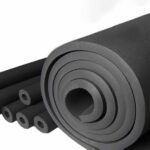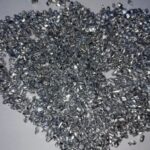Laser equipment has become the backbone of modern manufacturing, medical technology, jewelry making, engraving, and even semiconductor production. Its precision, speed, and versatility have redefined productivity standards across industries. But choosing the right laser equipment can be overwhelming without expert insights. This comprehensive, expert-backed guide will walk you through everything from types of lasers to industry applications, ensuring you make an informed investment with maximum ROI.
🔍 What is Laser Equipment?
Laser equipment refers to devices that emit focused beams of light for material processing or measurement. These tools can cut, weld, engrave, mark, or even perform delicate surgeries with incredible accuracy.
Depending on your application, you might choose between fiber, CO₂, diode, or solid-state lasers—each offering unique benefits for specific materials and processes.
📊 Table: Overview of Common Types of Laser Equipment
| Laser Type | Best For | Wavelength | Advantages |
|---|---|---|---|
| Fiber Laser | Metal cutting, marking, welding | 1064 nm | High precision, low maintenance, long lifespan |
| CO₂ Laser | Wood, plastic, leather, glass | 10,600 nm | Smooth edges, good for non-metals |
| Diode Laser | Barcode scanning, beauty, low-power tasks | 810–980 nm | Compact, efficient, low cost |
| Nd:YAG Laser | Medical, engraving, micro-machining | 1064 nm, 532 nm | Short pulse, suitable for hard materials |
💡 Why Laser Equipment Matters
Whether you run a manufacturing plant or a dental clinic, your choice of laser machinery can directly influence:
-
Product quality
-
Processing speed
-
Material versatility
-
Energy efficiency
-
Workplace safety
Laser technology also minimizes human error and reduces waste, making it environmentally and economically sustainable.
🏭 Industry Applications of Laser Equipment
1. Manufacturing & Metalworking
-
Cutting: Fiber lasers cut sheet metal with micro-level precision.
-
Welding: Deep penetration welding with low heat-affected zones.
-
Drilling: Used in aerospace for drilling fine holes in turbine blades.
2. Medical Industry
-
Ophthalmology: LASIK and other eye surgeries.
-
Dermatology: Skin resurfacing, tattoo removal.
-
Dental: Root canal treatments and gum surgeries.
3. Jewelry & Engraving
-
High-detail engraving of names, symbols, and patterns on metal or precious stones using low-power lasers.
4. Electronics
-
PCB Marking: High-resolution and non-contact labeling.
-
Wafer Scribing: Laser cleaving for silicon wafers in chip production.
⚙️ How to Choose the Right Laser Equipment
✅ Step 1: Define Your Application
-
Are you cutting, welding, or engraving?
-
What material will you work with?
✅ Step 2: Evaluate Power Requirements
-
Low-power (20W–50W) for engraving.
-
Medium (100W–300W) for cutting plastics and thin metals.
-
High-power (over 1kW) for industrial metal cutting.
✅ Step 3: Consider Maintenance and Lifespan
-
Fiber lasers: Up to 100,000 hours of operation.
-
CO₂ lasers: Require more frequent tube replacements.
✅ Step 4: Software and Automation Compatibility
-
Look for CNC integration, CAD/CAM software compatibility, and user-friendly interfaces.
🧠 Expert Tip: Choosing Between CO₂ and Fiber Lasers
| Feature | CO₂ Laser | Fiber Laser |
|---|---|---|
| Material Suitability | Wood, Acrylic, Glass | Stainless Steel, Aluminum, Titanium |
| Operating Cost | Higher (due to gas use) | Lower (solid-state, less energy waste) |
| Maintenance | More frequent | Minimal |
| Initial Cost | Lower | Higher |
| Beam Absorption | Better for organic material | Better for metals |
Recommendation: Choose fiber laser for industrial metal applications and CO₂ for non-metal engraving or crafting.
🔍 Frequently Asked Questions (FAQs)
❓ What is the lifespan of typical laser equipment?
Laser machines, especially fiber types, can last up to 100,000 hours with proper maintenance. CO₂ lasers tend to have shorter lifespans due to consumable tubes.
❓ Is laser equipment safe to use?
Yes, when used with appropriate safety enclosures, eye protection, and ventilation systems, laser equipment is very safe. Always check for Class 1 or 2 safety compliance for user-friendly models.
❓ How much does industrial laser equipment cost?
Costs vary greatly:
-
Engraving lasers: $2,000–$10,000
-
Welding machines: $10,000–$50,000
-
Cutting lasers: $20,000–$500,000+ depending on wattage and size
❓ Can laser equipment be used on glass or transparent materials?
Yes, CO₂ lasers are ideal for glass engraving. However, fiber lasers are generally not suitable due to poor light absorption in transparent surfaces.
❓ Do lasers consume a lot of power?
Laser efficiency has improved drastically. Fiber lasers consume up to 70% less energy compared to older technologies, especially in continuous production settings.
📌 Key Features to Look for in High-Quality Laser Equipment
-
Automatic focus adjustment
-
Built-in cooling systems (water or air)
-
Compact, sealed design
-
Remote monitoring and control
-
AI-assisted material recognition (emerging feature)
🔧 Maintenance Checklist for Optimal Performance
-
Daily: Clean optics and check alignment.
-
Weekly: Inspect cooling system and filters.
-
Monthly: Lubricate moving parts.
-
Quarterly: Software updates and recalibration.
-
Annually: Professional servicing and diagnostic check.
Neglecting maintenance can reduce performance by 30–50%, increasing long-term costs and downtime.
🧑🔧 Who Should Operate Laser Equipment?
Operators should undergo proper training and certification, especially for high-wattage or open-beam machines. Many manufacturers now offer in-house training or remote guidance, reducing learning curves for new teams.
📚 Pro Tip: Certifications That Add Trust
Look for machines certified with:
-
CE (Europe)
-
FDA (U.S. for medical)
-
ISO 9001
-
RoHS compliance
These certifications ensure safety, environmental responsibility, and manufacturing quality—aligning with Google’s Trustworthiness principle.
📉 Common Mistakes to Avoid
-
Choosing the wrong laser type for your material
-
Ignoring software compatibility
-
Underestimating maintenance requirements
-
Overlooking safety features
-
Falling for unverified, low-cost machines without proper testing
Investing in a reliable laser system saves far more in time, labor, and rework than going for the cheapest option.



